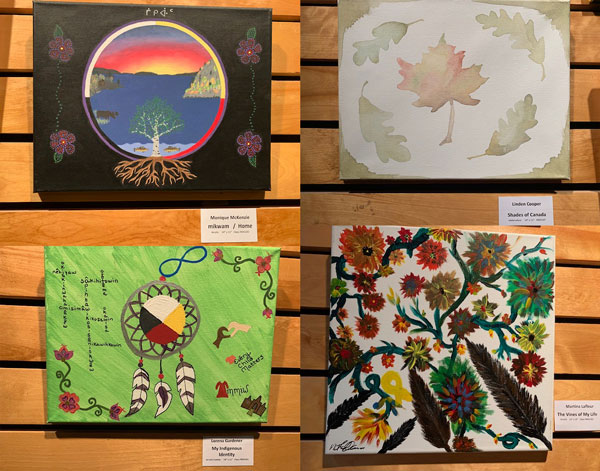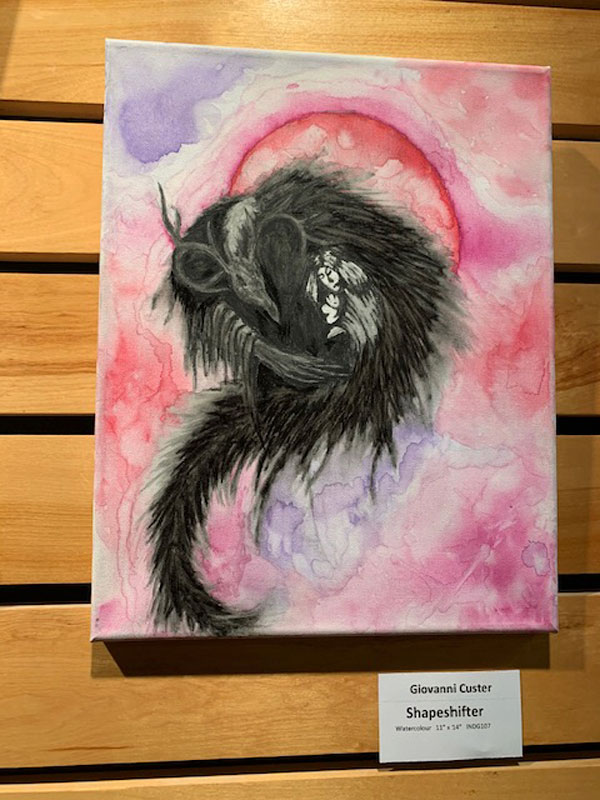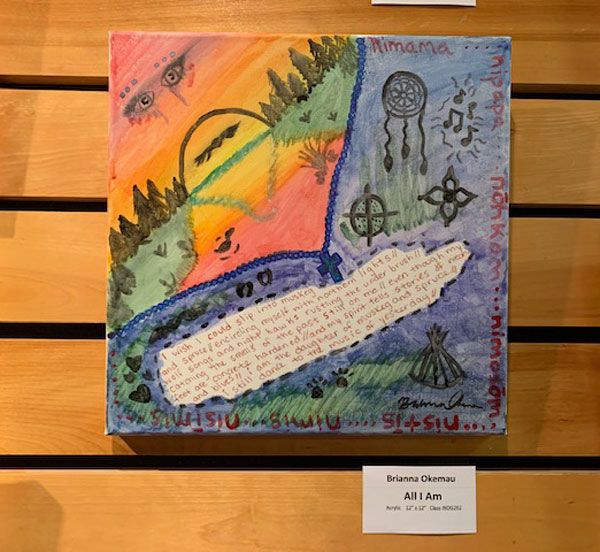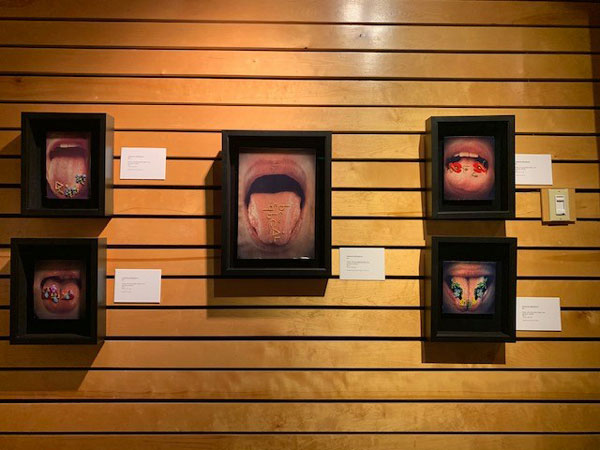
La Ronge exhibit displaying student artwork representing Indigenous identities
Colleen Charles wants youth to be proud of their roots.
She’s an Indigenous Studies instructor at Northlands College, a post-secondary institution in northern Saskatchewan.
Charles posed an assignment to students in two of her classes last semester. She started by walking them through the five stages of colonialism—which includes contact and cooperation and displacement and assimilation—and then handed each student a blank canvas.
“I said ‘I want you to use any medium, whether it be acrylic, oils, pen, pencil, pencil crayon. Use any medium and I want you to depict who you are as Indigenous, meaning Cree, Dene, Métis.’ There are some non-Indigenous folks in my class as well,” she said.
Over a month or two, the students continuously dipped into paint and sharpened their pencils. Some wrote meaningful Cree words over colours of the medicine wheel; others dabbled into reds and greens and painted Canadian scenery.
Students submitted a reflection of their artwork when completed, and that’s when Charles recognized the true impact of the assignment.
“I could see it in their writings that they’re proud of who they are and that’s what I want them to really come away with,” she said.
“It was a sense of healing and identity.”

Her students’ art pieces are a part of a new exhibit at Mistasinihk Place called I Do Not Have My Words, which explores cultural loss.
Charles hopes the art project teaches the group that no matter what struggles come their way, they know they’re on the right paths.
“I applaud and I just commend them. They are all strong individuals,” she emphasized.
As a single mother of three and a residential school survivor, she hopes they carry a sense of belonging into the future.
“When they know who they are, their outlook on life is more positive,” said Charles.
“Even though they come across negative things that happen, they’re going to bounce back.”

Charles had been in touch with Caron Dubnick of the La Ronge Arts Council, who organizes the visual exhibits. When Dubnick told her about the theme of I Do Not Have My Words—language loss—she knew she wanted to contribute.
Charles’ parents were also victims of government-funded residential schools, where they weren’t allowed to speak their Cree language. Although her mother and father still fluently speak Cree, they didn’t pass it on to their children.
She may not be able to speak the language, but she still identifies as Woodland Cree.
The theme of cultural loss was chosen by the Organization of Saskatchewan Arts Council (OSAC), said Dubnick. She feels it will resonate with many people in the north.
“A lot of people, not just Aboriginal people, have lost their language, but they can still identify as German, Canadian, or whatever their background is. But I think language is part of your culture—that’s a really rich gift. Anyone who has that gift I think is just really lucky,” she said.
Three Indigenous women have artwork in the exhibit: Catherine Blackburn, Audrey Dreaver and Joi T. Arcand.
I Do Not Have My Words features pieces from Blackburn’s collection called Our Mother(s) Tongue.
“Through various accounts of residential school survivor’s experiences, including my own family’s, I was made aware of one particular scarring physical abuse,” she said in an emailed statement.
“When Indigenous children would speak their own language in some residential schools, they would be reprimanded by having pins pierced through their tongues. This act was just another tool in the erasure and cultural genocide exercised through colonialism.”
According to her website, she used photos of her family members’ tongues and mouths and punctured them with pins to form Dene syllabics.
“This work, titled Our Mother(s) Tongue, is a series of textile based works that explore themes of language and loss, but also reclamation and survivance. These visceral photos of my own family members’ tongues and mouths are punctured using pins to form Dene syllabics and shadowed on the reverse by representations of Dene language, floral motifs and absence. They are representative of a violence that penetrates the body and spirit, and highlight the impact of Canada’s residential schools on Indigenous individuals, families and communities,” Blackburn said.

She was born in Patuanak and is a member of the English River First Nation.
Dreaver, who was raised in Prince Albert, explores her inability to speak Cree through art. Her collection NO I Do Not Speak Cree represents how she would tense up when people asked her about it.
“Anybody living in a country that had a colonial history as it was being established is living in a colonial state,” she told the Prince Albert Daily Herald in April of 2019.
“Losing your language is a perfect example of this.”
Blackburn said language is “at the core of cultural identity; to fully engage and understand our oral histories, to be involved and understand cultural innuendos, it reverberates deep and into all aspects of cultural connection”
Arcand is from Muskeg Lake Cree Nation.
Her work includes photography, digital collage and graphic design, and often incorporates the Cree language and syllabics.
I Do Not Have My Words is up in Mistasinik Place until Jan. 23. The opening reception takes place on Tuesday starting at 7 p.m.
It’s the first stop on a Saskatchewan-wide tour through the Arts on the Move initiative. Other stops include Prince Albert, Rosthern, Shaunavon, Tisdale, Nipawin and Moose Jaw.
— with files from Peter Lozinski

